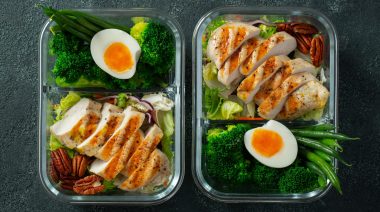Amino acids are of critical importance in the diet. Of course, the greatest source of dietary amino acids is protein from food sources. Protein provides the material for new muscle and the building blocks for countless other substances in the body, such as most of your enzymes, which are essential for life.
In other words, you need protein. In a recent Nutrition and Metabolism study, researchers examined what happens to the body when we eat different amounts of protein.
Many proteins can be synthesized by the body, meaning you don’t need to get them through diet. The ones that can’t be made are usually called essential amino acids, although perhaps a better term is indispensable amino acids. The second term is finding more use these days, since the word essential can be a bit confusing. In nutrition, essential simply means that you need to eat it to get it. However, many non-essential proteins are essential for life in the way we usually we use the word.
Study Design
In the study 137 men and women were split into three different groups. Each group consumed a different amount of protein.
- Low Protein Group: Five percent of calories were from protein.
- Medium Protein Group: Fifteen percent of calories were from protein.
- High Protein Group: Thirty percent of calories were from protein.
The researchers considered the medium protein group to be the norm. To put the numbers in perspective, on a 2,000-calorie-per-day diet, fifteen percent of calories would amount to about 75 grams of protein. A paleo dieter might find their percentage to be higher, whereas a vegetarian might have to work to get there.
Each participant was tracked for twelve days, and urine samples were collected to determine nitrogen balance, which is one indicator of healthy muscle synthesis. Amino acids produce nitrogen, which in turn contributes to muscle maintenance or growth.
Their diets were also analyzed for levels of indispensable amino acids, and their protein sources were regulated as well. Five percent of the protein consumed daily came from wheat, which means all the people in the low protein group received protein exclusively from wheat sources. The medium- and high-protein diets included protein from either whey, soy, or beef sources to achieve the higher values.
Results
There was nitrogen balance even in the five-percent protein diet, which means enough protein was being taken in to at least maintain existing muscle. On the other two diets, nitrogen levels were positive, meaning more nitrogen was being taken in than lost. That means that a diet as low as fifteen percent is sufficient for putting the body in a state of growth over twelve days.
Bear in mind that exercise was not a factor in this study. That means the requirements for achieving balance and growth would likely go up on an individual basis, but they’re not likely to be higher than in the thirty-percent diet. In other words, you should have no problem attaining a positive nitrogen balance on a thirty-percent protein diet, as long as you are getting enough calories to maintain your weight.
Although nitrogen balance was reached on five-percent protein, the low-protein diet was still insufficient to attain all of the indispensable aminos, perhaps because all the protein came from wheat. In the diets that used soy products to increase protein intake, the amount of protein required to get all of the indispensable aminos was also higher than the diets that focused on whey or beef.
This study shows it doesn’t take much protein to achieve nitrogen balance, but more is better with active individuals. To achieve proper nutrition, ensure you are taking in at least a modest or high amount of protein. If you are a vegetarian, you may want to consume amounts above recommended for your size in order to get in a varety of indispensable amino acids.
References:
1. Eveline Martens, et. al., “No protein intake compensation for insufficient indispensable amino acid intake with a low-protein diet for 12 days,” Nutrition & Metabolism 2014, 11:38.
Photo courtesy of Shutterstock.






